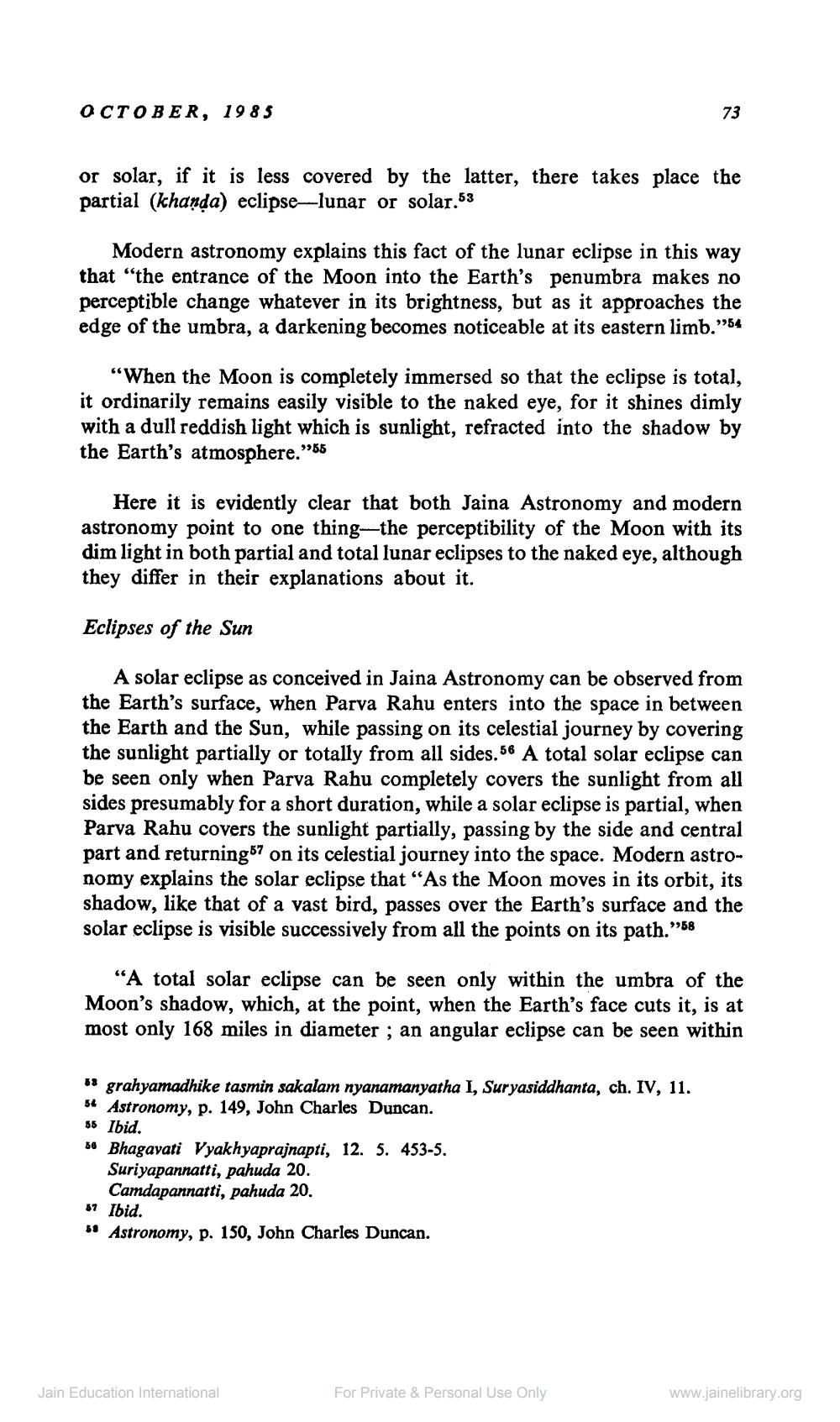________________
OCTOBER, 1985
73
or solar, if it is less covered by the latter, there takes place the partial (khanda) eclipse_lunar or solar.53
Modern astronomy explains this fact of the lunar eclipse in this way that “the entrance of the Moon into the Earth's penumbra makes no perceptible change whatever in its brightness, but as it approaches the edge of the umbra, a darkening becomes noticeable at its eastern limb."54
"When the Moon is completely immersed so that the eclipse is total, it ordinarily remains easily visible to the naked eye, for it shines dimly with a dull reddish light which is sunlight, refracted into the shadow by the Earth's atmosphere."55
Here it is evidently clear that both Jaina Astronomy and modern astronomy point to one thing the perceptibility of the Moon with its dim light in both partial and total lunar eclipses to the naked eye, although they differ in their explanations about it.
Eclipses of the Sun
A solar eclipse as conceived in Jaina Astronomy can be observed from the Earth's surface, when Parva Rahu enters into the space in between the Earth and the Sun, while passing on its celestial journey by covering the sunlight partially or totally from all sides. 56 A total solar eclipse can be seen only when Parva Rabu completely covers the sunlight from all sides presumably for a short duration, while a solar eclipse is partial, when Parva Rahu covers the sunlight partially, passing by the side and central part and returning57 on its celestial journey into the space. Modern astronomy explains the solar eclipse that "As the Moon moves in its orbit, its shadow, like that of a vast bird, passes over the Earth's surface and the solar eclipse is visible successively from all the points on its path.”58
"A total solar eclipse can be seen only within the umbra of the Moon's shadow, which, at the point, when the Earth's face cuts it, is at most only 168 miles in diameter ; an angular eclipse can be seen within
** grahyamadhike tasmin sakalam nyanamanyatha I, Suryasiddhanta, ch. IV, 11. 54 Astronomy, p. 149, John Charles Duncan. 66 Ibid. 56 Bhagavati Vyakhyaprajnapti, 12. 5. 453-5.
Suriyapannatti, pahuda 20.
Camdapannatti, pahuda 20. 57 Ibid. 5 Astronomy, p. 150, John Charles Duncan.
Jain Education International
For Private & Personal Use Only
www.jainelibrary.org




